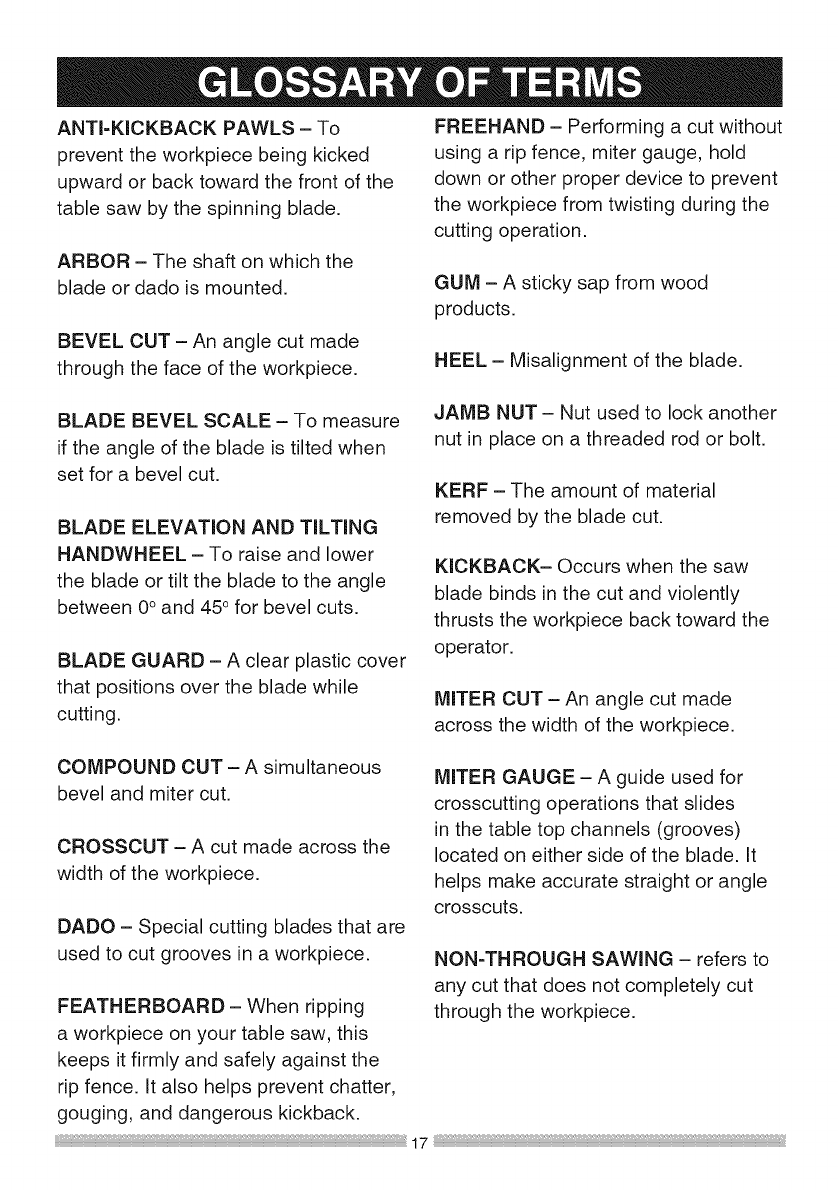
ANTI-KICKBACK PAWLS - To
prevent the workpiece being kicked
upward or back toward the front of the
table saw by the spinning blade.
ARBOR - The shaft on which the
blade or dado is mounted.
BEVEL CUT - An angle cut made
through the face of the workpiece.
FREEHAND - Performing a cut without
using a rip fence, miter gauge, hold
down or other proper device to prevent
the workpiece from twisting during the
cutting operation.
GUM - A sticky sap from wood
products.
HEEL - Misalignment of the blade.
BLADE BEVEL SCALE - To measure
if the angle of the blade is tilted when
set for a bevel cut.
BLADE ELEVATION AND TiLTiNG
HANDWHEEL - To raise and lower
the blade or tilt the blade to the angle
between 0° and 45° for bevel cuts.
BLADE GUARD - A clear plastic cover
that positions over the blade while
cutting.
JAMB NUT - Nut used to lock another
nut in place on a threaded rod or bolt.
KERF - The amount of material
removed by the blade cut.
KICKBACK- Occurs when the saw
blade binds in the cut and violently
thrusts the workpiece back toward the
operator.
MITER CUT - An angle cut made
across the width of the workpiece.
COMPOUND CUT - A simultaneous
bevel and miter cut.
CROSSCUT - A cut made across the
width of the workpiece.
DADO - Special cutting blades that are
used to cut grooves in a workpiece.
FEATHERBOARD - When ripping
a workpiece on your table saw, this
keeps it firmly and safely against the
rip fence. It also helps prevent chatter,
gouging, and dangerous kickback.
MITER GAUGE - A guide used for
crosscutting operations that slides
in the table top channels (grooves)
located on either side of the blade. It
helps make accurate straight or angle
crosscuts.
NON-THROUGH SAWING - refers to
any cut that does not completely cut
through the workpiece.
17


















